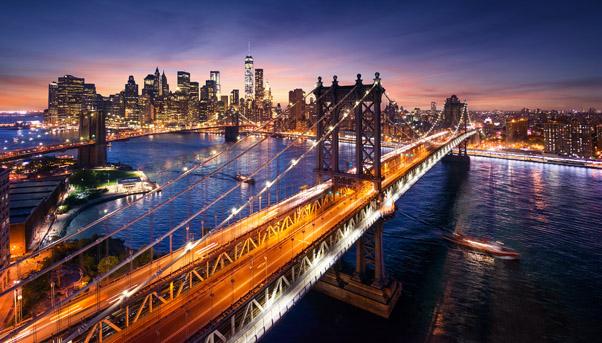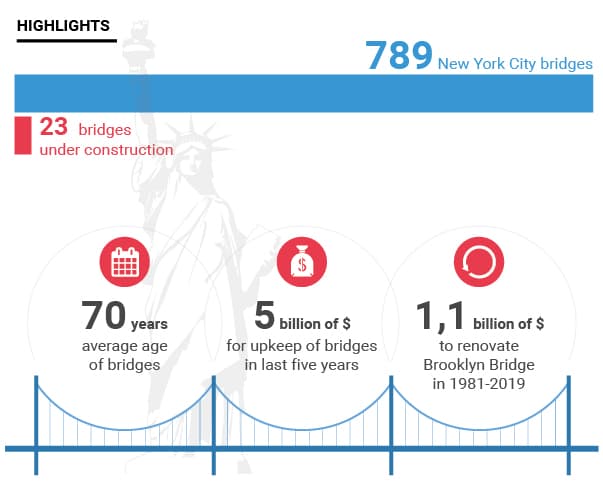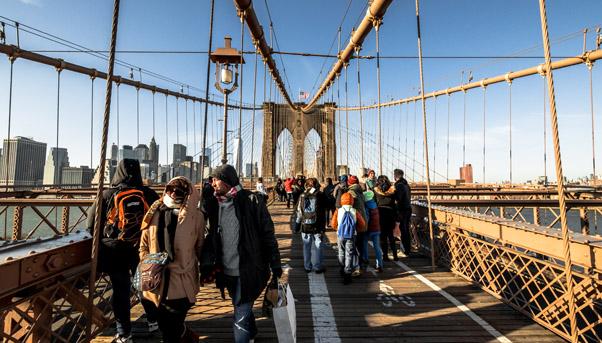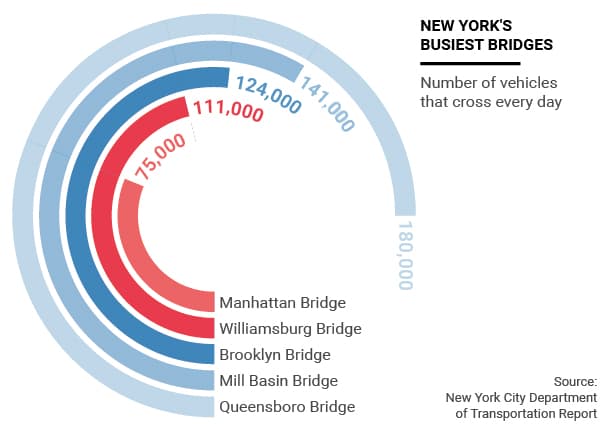
Bridges are a vital part of a country’s infrastructure for mobility, commerce and bringing people together. They are modern structures that help economies grow and contribute to the development of a community. It was the Industrial Revolution, which exploded in 1800s, to turn them into symbols of an age that came to challenge the laws of physics and mechanics thanks to the rise of engineering.
Their impact also left a footprint on the development of great metropolises such as in the unique and important case of New York.
In New York City there are 789 bridges that represent a key strength in urban mobility because they respond to the demand of a frenetic metropolis in perpetual change. A heritage of infrastructure that is managed by New York City’s Department of Transportation, which is committed to inspect, monitor and maintain existing bridges and supervise the construction of new public works. All of this needs a huge investment: in the last five years, 5 billion dollars in federal, state and municipal funds were spent to make sure that 8.4 million New Yorkers can move freely, meet each other and do business throughout the metropolitan area.
New York Bridge: costs and investments
The plan to manage and maintain the bridges of New York are contained in the latest report by the Department of Transportation, signed by Michele N. Vulcan, lead analyst of the Bridge Division. He and 832 others inspect, monitor and manage the 789 bridges of New York, a rich heritage accumulated over more than 100 years that obviously carried with it a high cost of maintenance. In recent years, according to the report, the city, the state and the federal government have spent $5 billion for the upkeep of existing bridges and the construction of new ones.

There are 23 bridges being built, ranging from the Madison Avenue Bridge over the Harlem River to the one at the Ninth and Third Streets of the Gowanus Canal. There still many new bridges that are still in the phase of planning (79 projects according to the city’s Department of Transportation) many of which should start to be built by 2016.
Meanwhile, most of the work concerns repairing existing infrastructure. In this regard the Brooklyn Bridge is an important case because it is a symbol of New York. Inaugurated in 1883, it is the recipient of a massive $1.1 billion investment that began in 1981 and will end in 2019.

The busiest bridges in New York City
In addition to the massive amount of funds earmarked for these works and the commitment of the people involved, there is an effort to guarantee residents and all those who come to work or visit New York an efficient mobility system able to absorb the mass of people, cars and trucks that move throughout the entire metropolitan area.
Bridges, in this sense, are precious instruments that connect the peripheral neighborhoods of the East River such as Brooklyn and Queens to Manhattan, the pulsing heart of the Big Apple. It is along these great arteries that impressive traffic statistics are registered.
According to the Department of Transportation, the number of vehicles that cross the biggest bridges on a daily basis is impressive. The record is held by the Ed Koch Queensboro Bridge, the most crowded of them all with more than 180,000 vehicles a day. Next is the Mill Basin Bridge with 141,000; then the Brooklyn Bridge with 124,000; the Williamsburg Bridge with 111,000; and finally the Manhattan Bridge with 75,000.
These are the great channels that connect Brooklyn, Queens and the Bronx to Manhattan, and, together with the hundreds of smaller and less known bridges, bring nearly one million people on a daily basis to the most famous island in the world.

New York bridges: a sustainable investment
If on the one hand managing this great heritage has its costs, on the other the return that the city receives in terms of development and economic growth are clear.
In this case, one of the few analyses on the economic impact of American infrastructure dates back to 2012 and it was done by the Federal Reserve Bank of San Francisco. Analysizing the consequences in economic terms of recently built works, the bank’s analysts discovered that in only 10 years infrastructure, by means of the rise in wealth that the community produces, does not only pay for itself but guarantees a notable growth in GDP. In general, according to the bank, every dollar spent in building infrastructure such as a bridge or a road correspondents to two dollars of growth in the GDP of the region serviced by this infrastructure.
So this is the precious inheritance offered by a work of engineering of this kind: the ability to return to the community not only the investment earmarked for its construction but something more. An added value that can be measured in terms of trade, modernization and integration – ingredients that are needed for the development of people and the growth of an economy.

